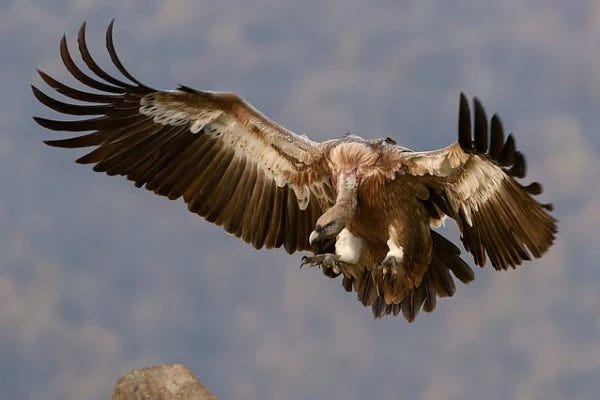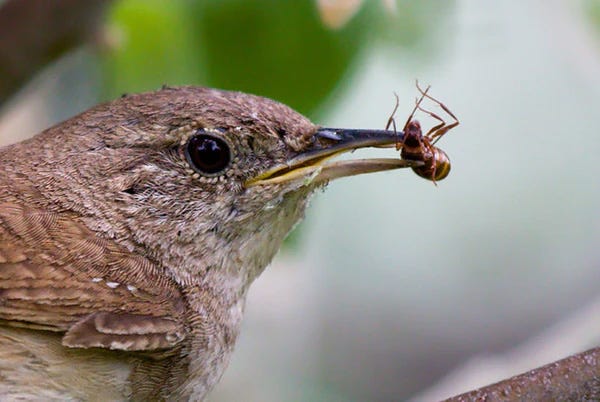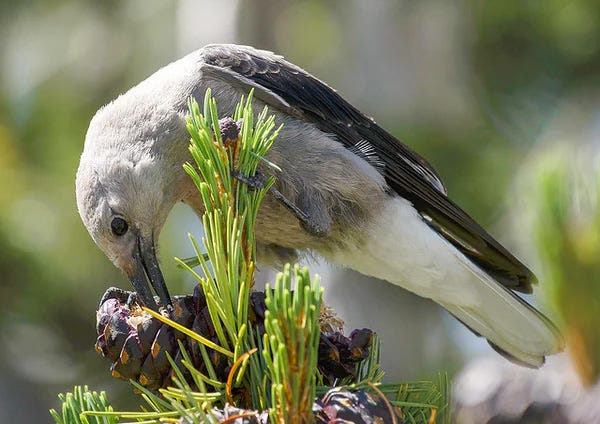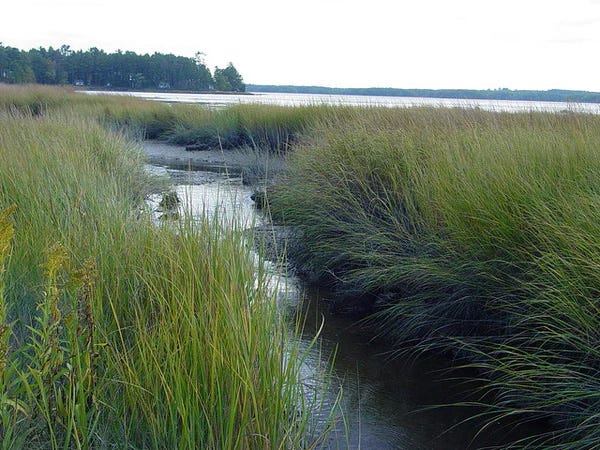
Birds are generous in so many ways. Among their gifts of song, beauty, humor, and inspiration are the profound benefits they bestow on the environment. When it comes to how birds benefit and protect the environment, birds:
- Scavenge and remove disease-prone carrion;
- Eat bugs… lots and lots of bugs;
- Cache seeds that grow into new trees and plants;
- Help maintain nature’s balance.
Without birds the Earth would be a very different and likely uninhabitable place for humans.

Nature’s Clean-up Crew
Scavenger birds like vultures, crows, and ravens provide critical sanitation services by eating animals that have died either by natural causes or because they were hit by a vehicle.
Travis DeVault, a research wildlife biologist with the U.S. Department of Agriculture, says:
We’ve got an enormous amount of roadkill produced on our highways in the United States. I don’t think anyone knows what that would look like if vultures weren’t around to clean up a big portion.
But it’s not just the benefits of clean roads and stench-free air that make scavenger birds so important. They prevent disease too.
Feral dogs or rats might take days to discover a carcass. But scavenger birds can arrive within an hour of an animal’s death and in flocks can quickly leave nothing but clean bones behind.
Without these birds’ efficiency, harmful bacteria, flies carrying illnesses, and diseases like rabies and tuberculosis would inevitably spread.
This was the case in the 1990s when Asia’s population of vultures collapsed.
Fed by the carrion that vultures would’ve eaten, India’s feral dog population grew to 5.5 million. This dramatic increase in number led to more rabid dog bites and caused an estimated 47,300 human deaths.
But scavengers aren’t the only birds that protect us from illness.
Owls, for example, will hunt rats and other rodents that can also carry disease. After installing nesting boxes in a Lodi, California, vineyard, 18 pairs of barn owls eliminated 25,000 rodents in just two years!
And they did it without poisons or trapping.

Nature’s Bug Brigade
The world’s birds eat 400 to 500 million metric tons of flies, ants, moths, aphids, crickets, worms, spiders, and other creepy crawly bugs every year. When you consider a typical grasshopper weighs about half a gram, we’re talking about the world’s birds eating an astronomically huge and unimaginable number of bugs.
Here’s a limited list of the many benefits conferred by nature’s bug brigade:
- Across America, purple martins, barn swallows, geese, ducks, and songbirds like the blackpoll warbler consume tremendous quantities of disease-carrying mosquitoes.
- Starlings may be bullies, but they’re your roses’ and lawn’s best friends. They eat adult Japanese beetles (not many birds do) and their grubs.
- For spruce and fir trees in Alaska, the evening grosbeak becomes a caped crusader during outbreaks of spruce budworm. The evening grosbeak eats the larvae that would otherwise consume the trees’ seeds and needles.
- Grape growers in California’s wine country are attracting western bluebirds with nest boxes. The boxes help bluebirds threatened by habitat loss, while the bluebirds eat blue-green sharpshooters—an insect that spreads Pierce’s disease, a deadly grape blight.
- In Jamaica, coffee berry borers, which can devastate a farmer’s coffee bean crop, are kept in check by migrants like the black-throated blue warbler and the American redstart.
Birds play an extensive role in controlling insect populations, and what’s better… they do it without the expense and toxic effects of pesticides.

Nature’s Gardeners
Butterflies and bees do much of the heavy lifting when it comes to pollinating flowers. But the contribution of birds is nothing to sneeze at.
While research about the role birds play in pollination is minimal, the research that has been done suggests birds pollinate between three and five percent of more than 1,500 species of plants. Not many, you might think, until you realize many of those plants have medicinal properties and three-quarters of them can’t self-pollinate. Suddenly, birds become a big deal.
And when it comes to seed dispersal, birds are an even bigger deal.
See also: How Birds Help Your GardenAccording to All About Birds from the Cornell Lab of Ornithology, “In some tropical forests, birds disperse up to 92 percent of all tree and woody species, including 85 timber species, 182 genera of edible plants (including spices), 153 medicinal plants, 146 ornamental plants, and 84 genera with other economic or cultural uses.”
Here in North America, Clark’s nutcrackers “plant” thousands of whitebark pine trees every year in a process called caching.
At the height of the season, Clark’s nutcrackers can cache up to 500 whitebark pine seeds an hour. The seeds are buried just deep enough to germinate, and while a nutcracker can remember up to 10,000 hiding places, they do forget some. It’s these forgotten seeds that grow into new trees.
What’s more, the cones of whitebark pines don’t open on their own, and their seeds don’t have “wings” like other pine seeds that carry them on the wind. Instead, they rely on the Clark’s nutcracker to pry the cones open and bury the seeds—sometimes as far as 20 miles from the parent tree—to propagate.
See also: How to Grow a Bird-Friendly Garden
Nature’s Guardians
In addition to the above, birds help preserve habitats:
- The salt marsh periwinkle, found in the southeastern U.S., is a snail that feasts upon cordgrass. Cordgrass filters the local water and protects the shoreline from erosion. If it weren’t for the plovers, oystercatchers, and curlews that eat this snail, the marshes would be mudflats.
- Seabirds deposit layers of droppings that leach into and fertilize nearby coral reefs. One study conducted at the Chagos Islands in the Indian Ocean reported that where seabirds were free from predators, the coral reefs thrived, and fish grew larger and faster.
If we take a moment to consider birds and all they do to benefit and protect the environment, it’s easy to understand the imperative to ensure their survival. Their well-being is our well-being, and halting deforestation and the use of toxic pesticides are two of the most important steps we can take toward saving bird populations.







